| Umělec magazine 2005/3 >> A Group Portrait with Artists in the Foreground - Polish Kindness and Tediousness | List of all editions. | ||||||||||||
|
|||||||||||||
A Group Portrait with Artists in the Foreground - Polish Kindness and TediousnessUmělec magazine 2005/301.03.2005 Magdalena Ujma | art project | en cs de es |
|||||||||||||
|
“Smart” means elegant, clever, intelligent… With some caution, it may be said that these are the words which the members of Supergroup Azorro want to relate to themselves. Looking upon their new project that includes this word, one may find that the artists want to present themselves as intelligent guys who know their way about in the maze of the world of art.
This image, however, contradicts their former stylization – the one of naive boys. Much like Forest Gump, they used to be able to point out, as if unconsciously, the paradoxes and contradictions which the world of art gets involved in. A good gallery is one that has the appropriate parameters. An exhibition can be considered a good one irrespective of whether it takes place in a gallery exhibiting tapestry copies of sunflowers or in the Zachęta Gallery. Curators are important people and therefore it is good to get photographed with them and, as if by chance, to be standing in the background (they will certainly notice it, these people are vain and have their complexes). Without mentioning any particular names, Azorro truthfully and with humor exposed the contradictions between the theories of people who are involved in art and their pragmatic and chicken-hearted behavior. Their criticism is, at the same time, so general that every sensible person must agree with it. Brash behavior and willingness to “foul their own nest,” to attack their fellow-fighters are the aspects that make this group the Polish — i.e. gentle – version of “bad boyzzz.” These boys are ironic, winking at the audience in a flirtatious manner. Self-stylization forms an integral part of the activities of the Azorro group. The members of the group appear in nearly all their films and the films are often stylized as incidental recordings of meetings with friends or of their journeys. They are swell guys of an uncertain age, deprived of illusions but with a sense of humor. They are no posers, they are just themselves. This includes an apotheosis of friendship between men – a bunch of friends indulging in their favorite pastimes, a slow shifting from one place to another, sitting, staring, beer drinking, fishing, contemplating, being bored and having laconic discussions. Glass Tower of Art The smart, deliberate game is directed especially at curators. Azorro’s activities serve practically only as an auto-thematic statement. In this respect, the group follows the modernist tradition which they simultaneously satirize. They do not comment on the formal aspects of a particular discipline but only on the way it functions and on esthetic value judgements. Nowadays, this is the only thing that art is, to a large extent, associated with – Azorro deals with its parti-cularities and participates in a variety of artistic fields. The fact that the group’s activities are addressed to professionals stresses this modernistic isolation in a glass tower of art. Such an orientation results from the acknowledgement of the fact that things which do not go together at all meet in the sphere of arts: a romantic – idealistic vision, a post-humous child of romanticism, of the avant-garde and modernism – and pragmatic functioning of the business machinery. After all, art is a great market, meaning that one should not follow one’s inspiration but a number of “regulations” imposed by the “big players” on this market–gallery owners, art dealers, curators, collectors, and famous artists. I must explain why I have used the word “smart.” It is the title of Azorro’s interactive CD. SMART is the abbreviation of Stop Making Art. This therapeutic program for artists was previewed in Krakow’s Bunkier Sztuki gallery in May 2004, and its opening night took place one month later at the extremely well promoted Poznan Art Fair. The program exposed the absurdity of both the context of the town gallery and the massive promotion of the fair carried out by means of the motto: “the unity of art and business”. SMART served as an excellent commentary on the fair’s bustle: racing for the best spots, attempting to sell works, telling tales about who sold what… The film called Koniec sztuki (The End of Art, 2002), shows friends from Azorro trying to waken their sleeping colleague. His loud snoring and a curious cat circling around the sleeper make the film irresistibly amusing. In order to wake the sleeper up, they shout, “Wake up! It is the end of art!” The only thing that I wonder about is why one should wake up: to worry about it or to rejoice over it? This film – which is not serious – poses a serious question about what an artist should do after the subject-matter of their work has ceased to exist. It tells us a story of uneasiness and leaves the matter open. It is a game focused on who outsmarts whom in the world of art, and Azorro discloses substantial questions that artists in the POST–art period ask themselves. Fatal Bad Habit SMART, in fact, is a continuation of The End of Art. Art does not exist and it is essential that we draw consequences from that. As for SMART, the members of Azorro act as the authors of the therapy, not the ones who are undergoing it. They have learned the truth; they have been awakened from sleep, dreaming, and lethargy – all those things that form the substance of the traditional concept of art. To them, to be an artist means to suffer from a disease, a bad habit and the way to recover is to break from it. Creation is presented as a problem that can be solved only with the assistance of an appropriate specialist or a relevant therapy. This attitude perfectly recapitulates the approach that we call modernist. For the line of thought from which the “cursed artists“ originated, it is indeed typical to present art and creation as a pathological condition. In the 19th or, at least in the first half of the 20th century, and in any case before any state with a developed social welfare system was established, artists were forced to pay heavily for their work: they lived in poverty, it cost them their health or their lives. The image of the cursed artist endures, yet more often now we can come across its less pompous and twisted version: unhappy abstainers who “have given up drinking and therefore their paintings are so miserable…” Nowadays, it is still inadvisable to show disdain for such a scheme, especially in the sphere of traditional artistic disciplines. It is necessary to take a stand against art that threatens or even destroys the lives of artists. The CD-ROM includes the process of “withdrawing” art which is presented in a very simple manner, as a line of ordinary and, in fact, banal utterances and magic formulas delivered by the therapists. Frankly speaking, it would be awfully boring, if it did not concern a matter that all worry about, a matter that people complain about to one another but one that fails to get any attention in public. This is because these calls are usually regarded as discontented grouching of individuals who have not conformed when cards were dealt in the sphere of Polish art and now they envy the lucky ones who have been able to conform. The appeal that appears at the end of the therapy session, “GIVE UP ART!!! STOP CREATING!!!” can be understood as a signal of a final farewell, but only a farewell to the old model of art (but one that prevailed in Poland for a ruthlessly long time). Is the exclamation in the film announcing “the end of art” an expression of relief? Is it a signal of something new as well? Some sort of hope or expectation? The pragmatism and mocking logic of the idea concerning the therapeutic CD-ROM, the use of such an essential element in the life of developed societies as therapy shows which patterns are employed by the Azorro group in their post-artistic activities. “We all descend from Duchamp”– this is what the members of the group could say. Such a heritage means keeping a humorous distance from various attempts to create theories, fantasies and other related “great narratives”. Ward Shelley, an American artist who plays the part of an English speaking therapist in SMART, said: “Artists are like mice, they live in the holes in the system.” “Criticism” Members of Azorro managed to remain artists without producing art. Their work focuses not only on the criticism of the institution. The most important thing is the emphasis on maintaining an objective distance and preserving their own independence. Nowadays, such an example of an internal non-heroic defiance, defiance based on laughter, defiance against attempts to appropriate artists and art becomes more and more topical – or at least it guarantees great fun. Notes: SMART: Stop Making Art A therapeutic program for artists. It is the title of an interactive CD-ROM produced by Supergrupa Azorro in 2004. The unofficial curator team “exgirls“ nominated the SMART project for the competition providing the chance to participate in the Polish pavilion at the Venice Biennale in 2005. According to unofficial sources, the project won the second prize and until the very end of the competition it kept on fighting for first price with the winning project by Artur Żmijewski. Azorro Supergrupa Azorro (Oskar Dawicki, Igor Krenz, Wojciech Niedzielko, Łukasz Skąpski) was founded in 2001. The group consists of artists who are also famous and appreciated for their individual works, authors of installations, objects, performances, photography and videos. According to the members themselves, the large sphere of artistic experience enables the group to get around the world of contemporary art in a rather independent and sensible manner. There are many things one can say about this world except that it is the most perfect world of all. Together they make videos, being their own protagonists. They are interested in superficial perception of art, paradoxes of institutionalized circulation of art. They pose questions about what contemporary art is like and what positions are held by artists and curators. Azorro is peculiar for their naive questions that highlight the absurdity of the institutional and market situation which contemporary art has got into. This approach is important especially in the Polish context. During the 1990s, after freedom was gained, the sphere of arts went through an intense process of democratization. The influence of romantic paradigm wasted away and a new model of the way in which an artist should function in institutions appeared. This model, however, proved to produce the same influence on artistic and creative freedom. That is why the Azorro artists use a certain kind of internal, non-heroic defiance and, by means of humor, they fight against various attempts by institutions to appropriate art and artists for themselves. It is even possible to say that the members of the group manage to be artists without producing art, which is an ideal commentary on the contemporary situation of art both in Poland and in the world. Oskar Dawicki is one of the most famous Polish performers. He exposes the absurdity and paradoxes of the world of popular culture. He contemplates the purpose of art at the present time; he searches for his own identity as an artist. Igor Krenz is engaged in video art. He founded a film company called “Kino“ (Cinema). Krenz’s films are characterized by their gentle sense of humor and self-stylization. Wojciech Niedzielko specializes in photography. Niedzielko has also cooperated with Igor Krenz. Łukasz Skąpski makes installations, photographs, films and objects characterized by their minimalist use of media. He is also engaged in painting. www.skapski.art.pl Filmography Bardzo nam się podoba (We Like It a Lot), 2001 Azorro Standard, 2002 Czy artyście wolno wszystko? (Is an Artist Allowed to Do Anything?), 2002 Hamlet, 2002 Portret z kuratorem (A Portrait with a Curator), 2002 The Best Gallery, 2002 Koniec sztuki (The End of Art), 2002 Hic et nunc, 2002 Propozycja (Proposition), 2002 Moving Logo + Pegaz Presents, 2002 Pyxis Systematis Domestici Quid Video Dicitur, 2003 Awaria (An Accident), 2004 Niech się dzieje co chce (Whatever Is Going On), 2004 Rodzina (A Family), 2004 Azorro Standard 2, 2004 Louvre, 2004 Project SMART: “Stop Making Art” at the Venice Biennale: EXHIBITION The exhibition will consist of the following: A place where SMART CD-ROM will be presented A warehouse where SMART will be sold Advertising campaign 1. The entrance The place where the CD-ROM is to be presented will be located at the entrance. There will be three common desks and chairs there (we do not have any special demands, they might be worn) with computers placed on them, which would enable visitors to watch the SMART CD-ROM. On the outside of the building, above the entrance, a banner will be placed, an advertisement for “sale“, i.e. the exhibition in the Polish pavilion. 2. The hall The CDs will be placed on metal display shelves, which are usually used in stores. This warehouse will cover all the inside of the pavilion; only a narrow passageway (about 2 meters) would remain. The arrangement should suggest more of a wholesale warehouse than an art exhibition. It should have an ironic effect and it should comment not only on the situation of Polish art but also on this great festival and, at the same time, an art “marketplace” where there is the issue of profit hidden behind all the noble values, as this is the case of the Venice Biennale. The actual exhibition will be represented by the warehouse of CDs that will be available for sale to the visitors. The pile of CDs will, however, be presented as sort of a hypocritical statue, a work of art in spite of the fact that the artists declare their aspiration to liberate themselves from art. This “statue“ should follow the tradition of minimalism. Moreover, it will gradually become smaller. 3. Advertising Campaign for SMART, that Supergrupa Azorro is going to assign to a small Polish advertising agency. An image of the SMART project and the following products are to be created: a banner, leaflets, a poster, web pages. All the aforementioned products are to be made in a shoddy manner, one that is typical for small Polish advertising agencies that do not usually employ a graphic designer.
01.03.2005
Recommended articles
|
|||||||||||||
|
04.02.2020 10:17
Letošní 50. ročník Art Basel přilákal celkem 93 000 návštěvníků a sběratelů z 80 zemí světa. 290 prémiových galerií představilo umělecká díla od počátku 20. století až po současnost. Hlavní sektor přehlídky, tradičně v prvním patře výstavního prostoru, představil 232 předních galerií z celého světa nabízející umění nejvyšší kvality. Veletrh ukázal vzestupný trend prodeje prostřednictvím galerií jak soukromým sbírkám, tak i institucím. Kromě hlavního veletrhu stály za návštěvu i ty přidružené: Volta, Liste a Photo Basel, k tomu doprovodné programy a výstavy v místních institucích, které kvalitou daleko přesahují hranice města tj. Kunsthalle Basel, Kunstmuseum, Tinguely muzeum nebo Fondation Beyeler.
|







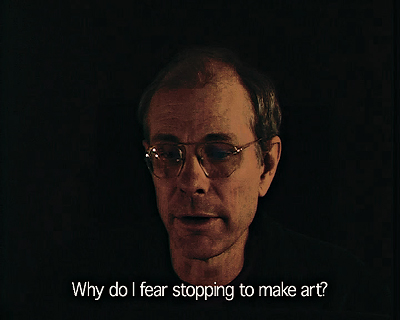

























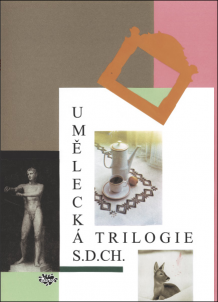




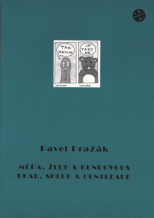
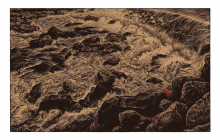
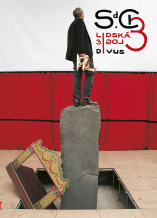
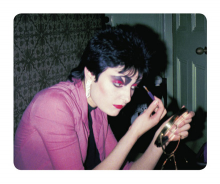


 We Are Rising National Gallery For You! Go to Kyjov by Krásná Lípa no.37.
We Are Rising National Gallery For You! Go to Kyjov by Krásná Lípa no.37.
Comments
There are currently no comments.Add new comment